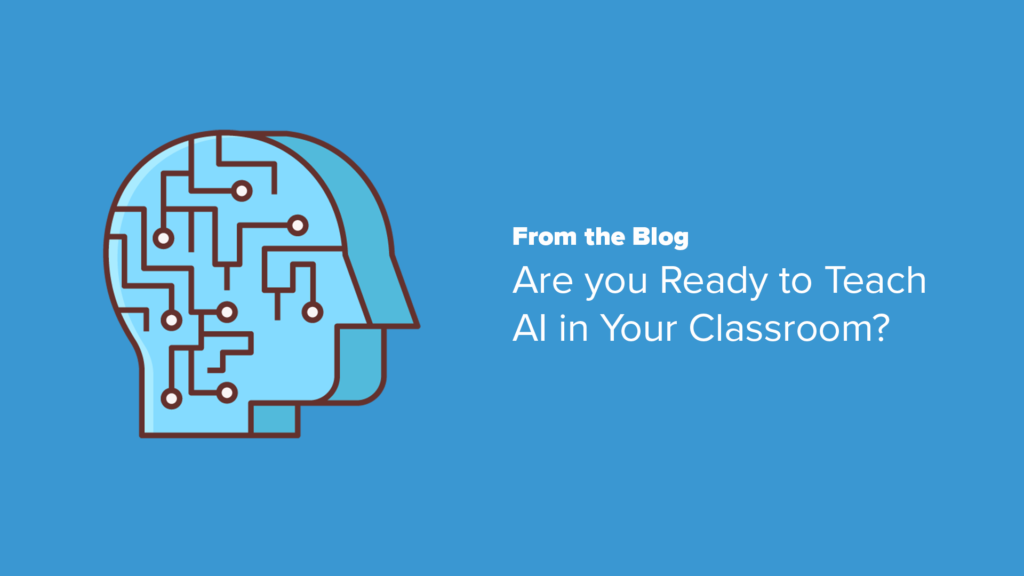Are You Ready to Teach AI In Your Classroom?

In June, Education Week published an article titled “7 Strategies to Prepare Educators to Teach With AI.” In this article, author Lauraine Langreo outlined seven ways that teacher prep programs and/or school districts can prepare teachers to teach with and about artificial intelligence, as shared by those in ISTE’s AI in Education Preparation Program.
We’ve narrowed down some of our AI resources and listed them below with the applicable strategy from the article.
Strategy 1: Foster a universal foundational understanding of AI
In 2020, we created an entire webinar series around artificial intelligence and the 5 Big Ideas in AI as outlined by AI4K12. We suggest watching the History of AI webinar first to get that basic understanding. From there, the remaining videos in the series can be viewed in any order. Each webinar includes practical AI applications and ideas for how to introduce the concepts to your students.
Strategy 3: Use the Five Big Ideas in AI as guidance for K-12 AI literacy
Our live virtual professional development course, AI Education in the Classroom, is for educators who want to explore methods for integrating dynamic AI resources and curriculum into the classroom. Focusing on the Five Big Ideas in AI, educators participate in discussions, explore online tools, and develop lessons to integrate fundamental AI concepts into specific classrooms.
Strategy 4: Facilitate exploratory experiences that develop and apply AI knowledge
Written to introduce and reinforce the Five Big Ideas, our K-12 AI Foundations curriculum gives students a relevant, approachable, and hands-on introduction to the fundamental concepts of artificial intelligence. We have created two guides for each of the following grade ranges: K-2, 3-5, 6-8, and 9-12. The second guide (Unit 2) for each level builds on the concepts introduced in the first guide (Unit 1). Additionally, each lesson is written in the 5E format and centers around one of the Five Big Ideas.
Strategy 5: Infuse AI literacy across existing curriculum
The best way to learn any new concept is through hands-on engagement and interaction. As mentioned, our AI Foundations curriculum includes a variety of opportunities for students to learn about artificial intelligence and experience how it works. To give you a better idea of what some of these activities are and how they connect to other areas such as SEL, computer science, and math, watch one or all three of these AI-focused webinars.
Strategy 6: Integrate critical examinations of AI technology into classroom experiences
The fifth lesson in each of our AI Foundations guides focuses on the societal impact AI can and does have in our world. In these lessons, students discuss and work through activities centered around concepts such as unintended consequences, how our choices impact others, examples of good and bad AI, bias, and inclusive AI systems. While we believe everyone should be a user of technology, we also feel that knowing how that technology impacts others is equally important.
If you’re just seeking to learn more about AI or have already started preparing yourself or others, we hope you find our resources to be beneficial. If you have any questions or would like to reach out, please email us at [email protected].